Review: Knolly Endorphin
Originally posted on November 18, 2013 at 18:49 pm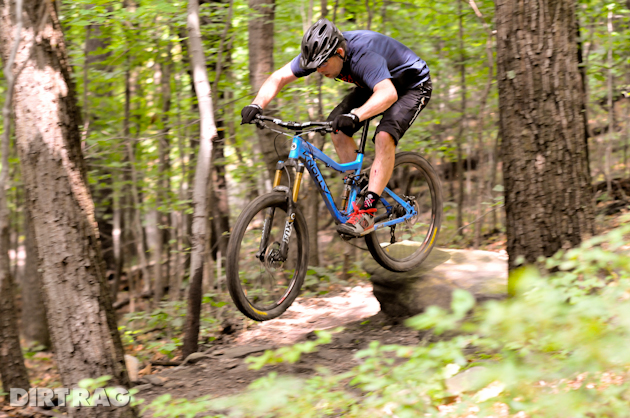
Knolly Bikes’ CEO and chief designer, Noel Buckley (hence the correct pronunciation: noll-lee), not only has a degree in engineering and physics, but was born and bred on the trails of Vancouver. This is quite apparent in Knolly’s lineup of bikes built for the rocks and roots of the North Shore. From the Red Bull Rampage tested Podium and the all-mountain monster Chilcotin, to the relatively tame Endorphin, all are built to take a bit of abuse. Don’t let my choice of words fool you, the Endorphin would hardly ever be classified as tame in some other manufacturers’ line ups, but at 140mm, it’s the shortest travel bike Knolly offers.
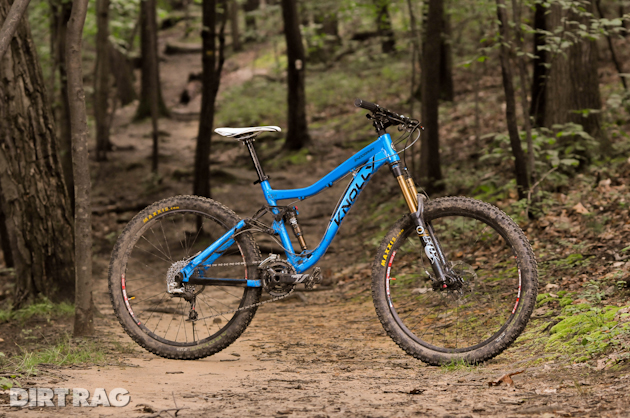
The Endorphin we got our hands on came with a SRAM XX drive-train and brakes, a Fox CTD shock and 150mm travel 34 Float fork, DT Swiss M480 rims, and uber-sweet carbon RaceFace Next cranks. We didn’t get a dropper post with our build, but you can expect that to be available during purchase. I was told new kits now come with a SRAM Type 2 Clutch derailleur as well, which is a very good thing. In 2014 look for Knolly to offer a Shimano XT group as an option. While this build was solid, about 85 percent of Knollys purchased go out as frame and shock only. If you go that route you can get your hands on a frame and CTD shock for $1,975 or upgrade to the Cane Creek Double Barrel Air, with Climb Switch for an additional $325.
The heart of the Endorphin, and all Knolly Bikes, is Buckley’s 4×4 suspension design. It allows for the separation of wheel path and spring curve, which in turn allows independent tuning of both. The Endorphin’s mechanically active suspension prioritizes traction over pedaling efficiency, which makes a lot of sense for riders who are riding in terrain similar to the suspension design’s birthplace. Climbing through roots, rocks, and the like demands as much rear wheel contact with the ground as possible.
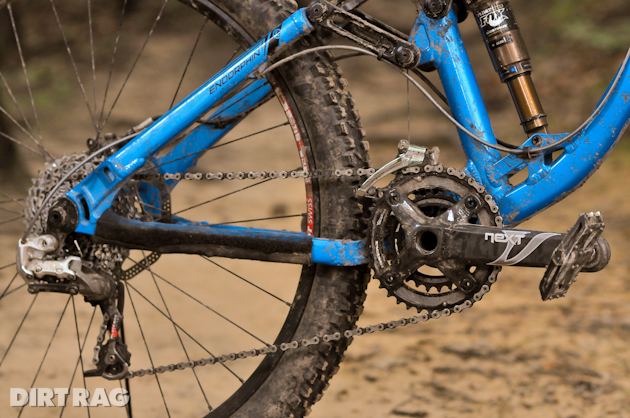
Fortunately I get to ride on a lot of trails that require just what the Endorphin delivers—grip. No matter what type of obstacle I found myself trying to negotiate, the rear wheel felt well planted and the tire’s knobs continuously found their footing. This was especially helpful during this year’s wetter-than-normal riding season, making trail features a little slicker and sketchier.
Because of the active rear suspension, Knolly relies on the shock to keep pedal-bob to a minimum. I spent most of my time on the bike with the CTD shock set to Trail mode and the low speed damping on 1 as suggested by Knolly’s global director of sales, Kevin Waterbury. This provided just enough platform to make pedaling feel efficient, while maintaining a good grip on surfaces while climbing.
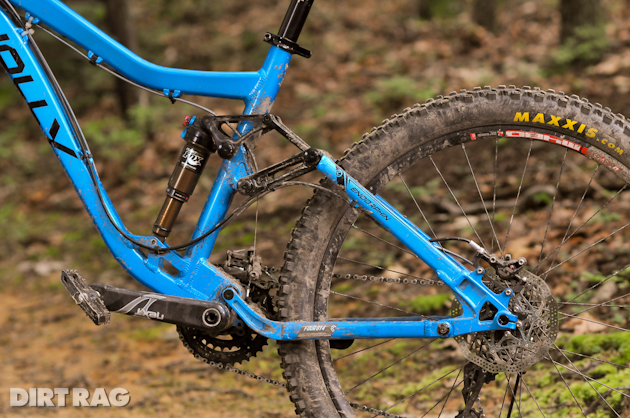
There are a good deal of trails right by my house that need a bike that can adjust well to bermy, swoopy trails, interrupted by moderately hairy rock gardens, sometimes followed by a short technical climb. The Endorphin provides a solid amount of support while tearing through the berms and rocks and I didn’t experience much wallowing in the shock’s mid-stroke. This points to a very nicely matched leverage and spring rate. There was never the feeling of blowing through the travel too quickly. I did find myself bottoming out every once in awhile, but it was never incredibly harsh, and usually I didn’t notice I had until I stopped for a break and saw the O-ring hanging off the end of the shaft.
Besides one of the nicest paint jobs I’ve seen of late—the blue is simply beautiful—one of the things that’s most notable is the fact that Knolly crafts its bikes with a seat tube that is forward of the bottom bracket. This is done so the rear wheel has more room in its travel, while maintaining a respectable wheelbase length. In addition, the seat tube is milled all the way down so you can run an uncut seatpost on any size bike.
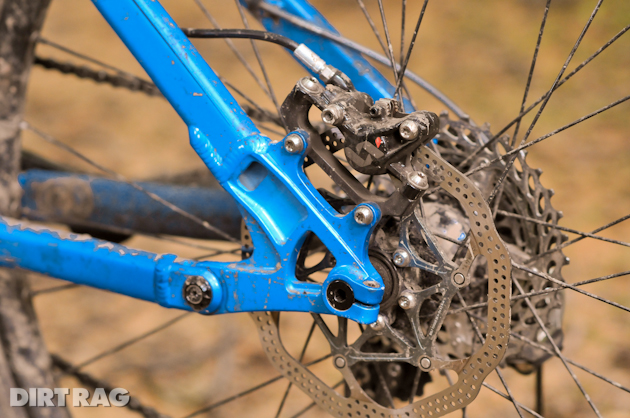
I was, however, bothered slightly by the choice of a 5mm pinch bolt that was used to secure the rear 142×12 rear axle. While Buckley explains that the design is meant to provide additional heel clearance and lateral rigidity, I found myself missing the ability to remove my rear wheel without tools.
What Buckley has created has to be one of the better bikes I’ve had the pleasure of riding on those trails that just kick your ass sideways. When I’m pushing it hard on terrain where I’m not completely sure what’s coming around the corner next, it’s nice to be on a bike that can take that big hit, recover quickly, and immediately climb up the next scraggly, nasty climb.
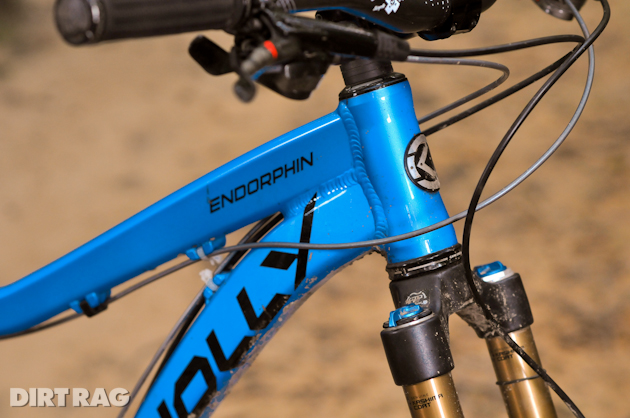
I didn’t really ever feel the need to switch between modes on the shock or fork, unless I knew I’d be either spending time enjoying the loving pull of gravity through endless rocks or fighting to break free of her grabby hands on those forever smooth uphills. If you live in an area where your trails require a bike that can track well through rough terrain; maintain its composure while tackling tough, technical climbs; and provide a solid platform while pedaling, you should definitely put the Endorphin on your short list. This is an incredibly fun, capable bike.

Vital stats
- Price: $5,895
- Sizes: S, M (tested), L, XL
- Wheelbase: 44.9 inches
- Top tube: 23.5 inches
- Head angle: 67 degrees
- Seat tube angle: 73.5 degrees
- Bottom bracket height: 13.4 inches
- Rear center: 16.7 inches
- Weight: 27.2 lbs.
Specs based on size tested